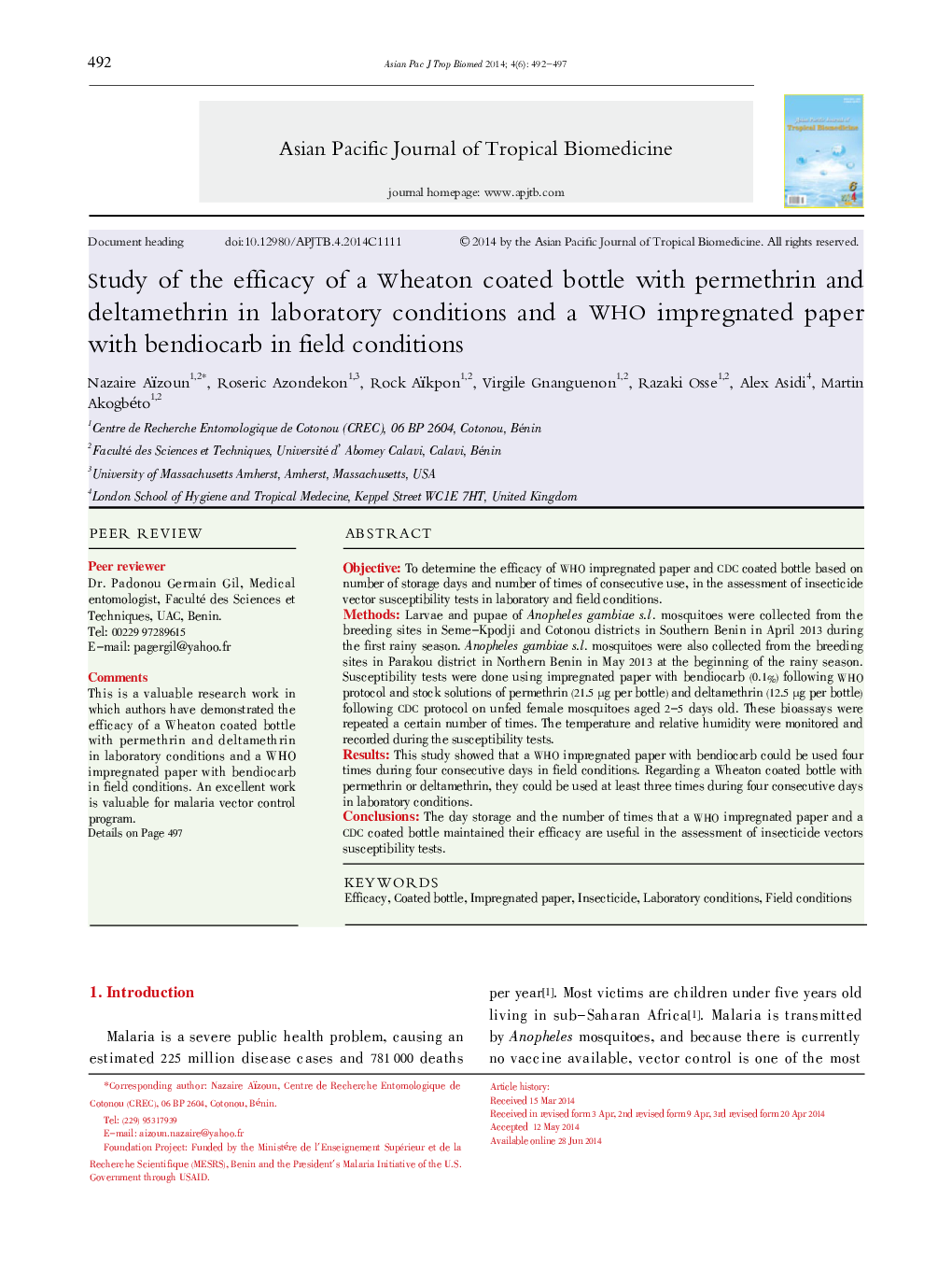| Article ID | Journal | Published Year | Pages | File Type |
|---|---|---|---|---|
| 2032902 | Asian Pacific Journal of Tropical Biomedicine | 2014 | 6 Pages |
ABSTRACTObjectiveTo determine the efficacy of WHO impregnated paper and CDC coated bottle based on number of storage days and number of times of consecutive use, in the assessment of insecticide vector susceptibility tests in laboratory and field conditions.MethodsLarvae and pupae of Anopheles gambiae s.l. mosquitoes were collected from the breeding sites in Seme-Kpodji and Cotonou districts in Southern Benin in April 2013 during the first rainy season. Anopheles gambiae s.l. mosquitoes were also collected from the breeding sites in Parakou district in Northern Benin in May 2013 at the beginning of the rainy season. Susceptibility tests were done using impregnated paper with bendiocarb (0.1%) following WHO protocol and stock solutions of permethrin (21.5 μg per bottle) and deltamethrin (12.5 μg per bottle) following CDC protocol on unfed female mosquitoes aged 2-5 days old. These bioassays were repeated a certain number of times. The temperature and relative humidity were monitored and recorded during the susceptibility tests.ResultsThis study showed that a WHO impregnated paper with bendiocarb could be used four times during four consecutive days in field conditions. Regarding a Wheaton coated bottle with permethrin or deltamethrin, they could be used at least three times during four consecutive days in laboratory conditions.ConclusionsThe day storage and the number of times that a WHO impregnated paper and a CDC coated bottle maintained their efficacy are useful in the assessment of insecticide vectors susceptibility tests.
